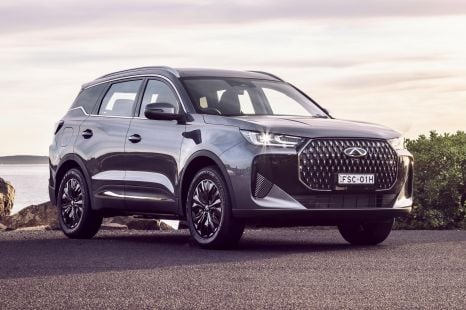

Max Davies
2025 Chery Tiggo 7 Super Hybrid review
1 Month Ago
The new-gen X-Trail will offer Nissan's unique take on hybrid technology early next year, and we've had an early steer in Europe to see if it's any good.
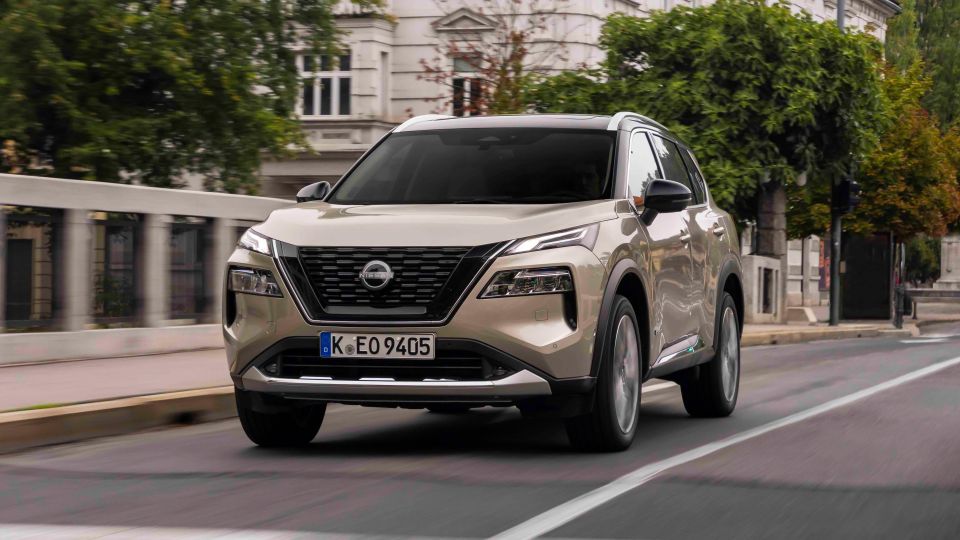


Quickly see how this car stacks up against its competition. Select any benchmark to see more details.
Where expert car reviews meet expert car buying – CarExpert gives you trusted advice, personalised service and real savings on your next new car.
Hybrids have evolved and much like internal combustion engines, not all hybrids are designed or built the same way.
Nissan has taken the philosophy of a conventional hybrid and taken it one step further by effectively creating an electric SUV that is uses an internal combustion engine as its energy source.
And, of course, as with all new technology, they have given it a trendy name, officially called the 2023 Nissan X-Trail e-Power with e-4orce (yes, that’s not a typo, unfortunately).
It’ll be arriving in Australia in early 2023 and we had the chance to get a preview drive at the global launch ahead of its local arrival next year.
While the broader Nissan X-Trail range includes a number of different model grades, the X-Trail e-Power e-4orce will only be offered in two trim levels for the Australia market, the Ti and Ti-L.
Pricing kicks off from $54,190 plus on-road costs for the X-Trail e-Power with e-4orce Ti, while the top-specification Ti-L variant comes in at $57,190 before on-roads.
Pricing represents a $4200 premium over the equivalent X-Trail 2.5-litre petrol. For reference, Toyota’s most expensive petrol-electric RAV4 is the flagship Edge AWD Hybrid, which starts at $52,700 before on-roads – $2500 dearer than the Edge AWD petrol.
It also means the X-Trail e-Power starts at a similar price point to the Outlander Plug-in Hybrid EV (from $54,590), which shares the same basic architecture but better EV range and superior fuel consumption.

Despite the Nissan X-Trail and Mitsubishi Outlander sharing the same platform, it’s hard to spot the similarities inside the cabin. Each has their own unique features and it feels like Nissan has gone with a more premium approach.
The X-Trail e-Power will come standard in Australia with a big 12.3-inch colour touchscreen display, in addition to a 12.3-inch display ahead of the driver. The head-up display is also big, measuring in at a little more than 10 inches in size, meaning it can offer a huge amount of addressable information.
Along the dashboard, doors and centre trims you’ll find soft-touch leather-esque materials, while a dual-tiered centre console and big centre console bin offer a surprising amount of storage.
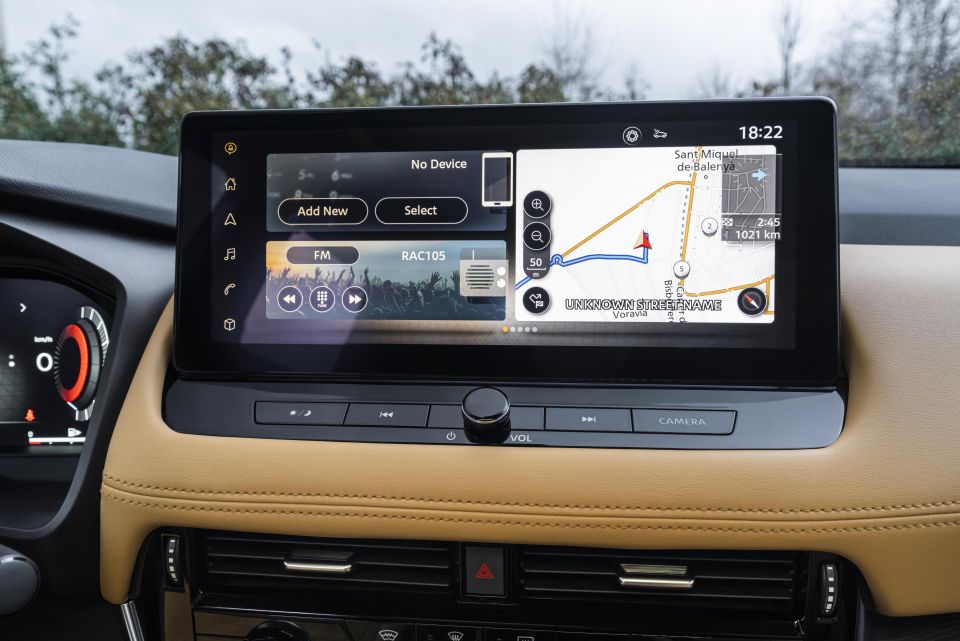
The infotainment system features wireless Apple CarPlay and wired Android Auto, while audio comes in the form of AM/FM and DAB+ digital radio, all sent through a 10-speaker Bose-branded premium sound system.
The glass roof runs all the way to the second row with the front half capable of being opened, while an electric blind offers full closure. Second-row seats also get manually-retractable window shades.
Both front seats offer 10-way power adjustment with memory, in addition to seat heating and steering wheel heating.
There’s a stack of connectivity throughout the car with wireless phone charging, USB-C and USB-A connectivity in the first and second rows.
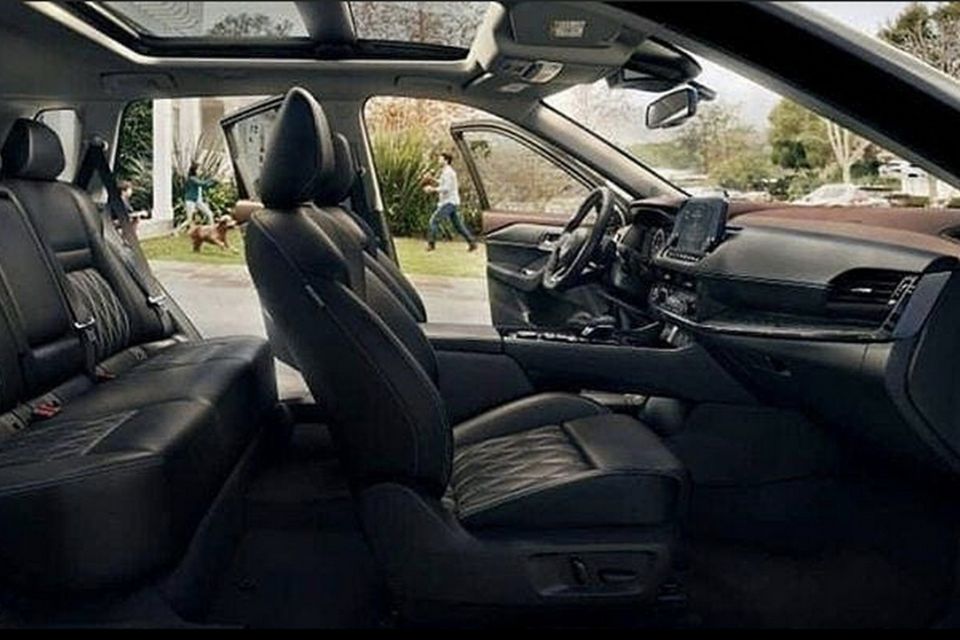
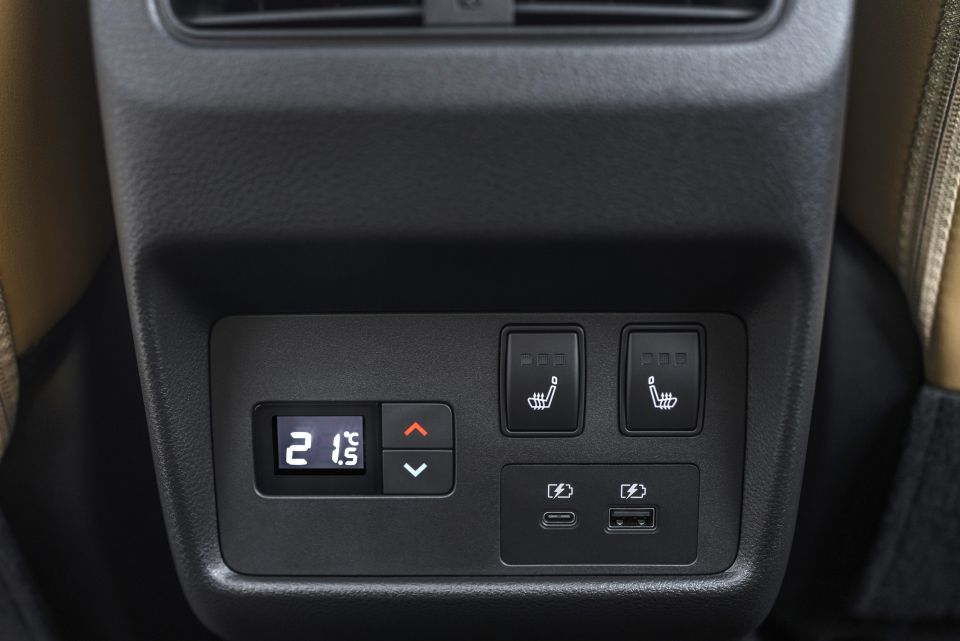
The second row is pretty spacious with ample leg and headroom for adults. While we won’t be getting the seven-seat version in Australia, the second row can slide by up to 200mm and recline to offer more boot space.
Speaking of which, cargo space isn’t greatly compromised due to the hybrid system. Cargo capacity comes in at 575 litres to the cargo blind, which is 10 litres down on the non-hybrid X-Trail.
The 1.8kWh battery is located beneath the passenger seat and Nissan has employed a clever system of cooling for the battery. It’s an air-cooled battery that draws air in from the cabin beneath the passenger seat – it then passes over the cells and exits behind the C-pillar.
Nissan’s testing of battery thermal management included a number of high speed charge and discharge cycles, but the one we found most interesting was loading the car up to payload capacity with a full roof load.
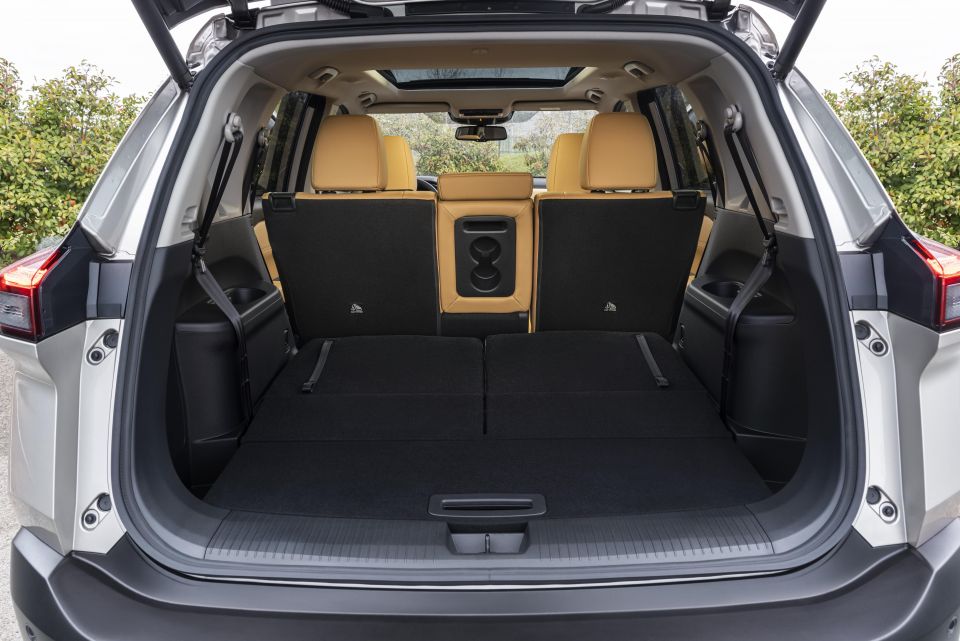
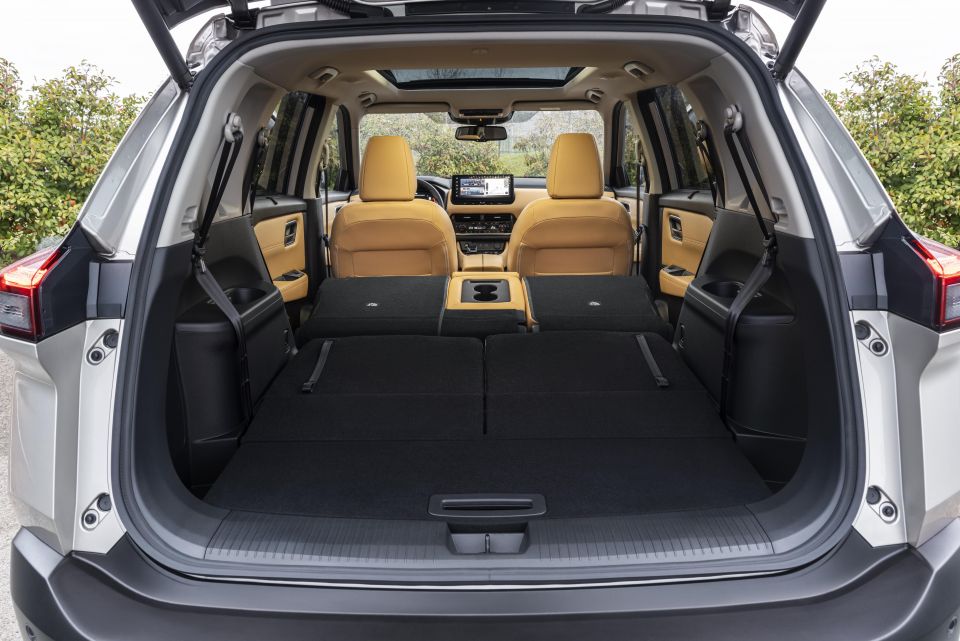
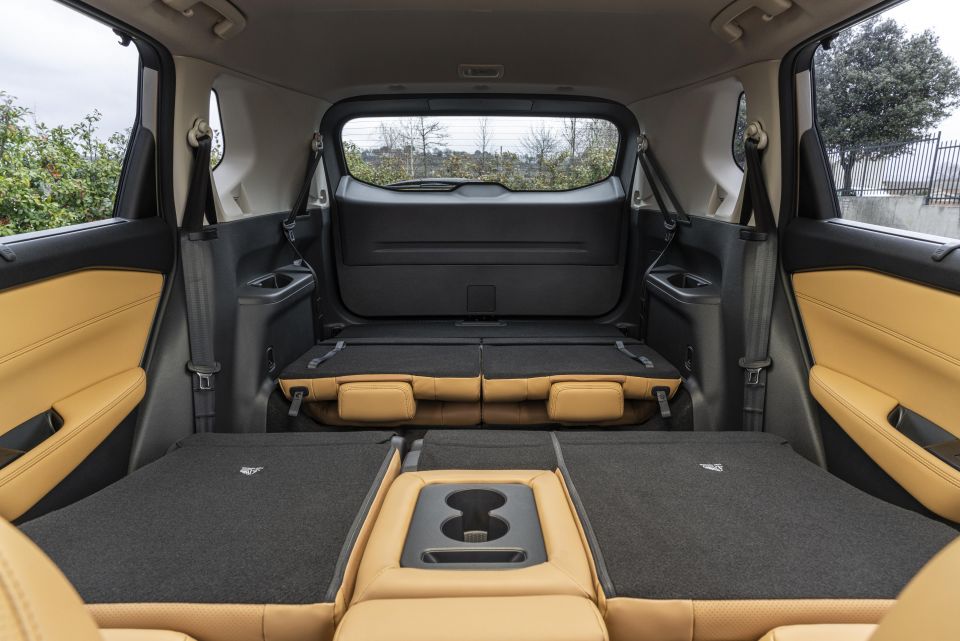
The engineering team then drove the car at maximum speed on the Autobahn on the highest continuous grade of derestricted road.
This 4.0 per cent grade lasted for 13km at maximum speed and didn’t see the battery discharge or overheat beyond the design parameters. Given this is the worst case scenario for a customer, it’s likely to pass the test regardless of what you’re doing with the car.
Nissan also helped reduce the weight of the vehicle by using a plastic-formed tailgate, along with aluminium doors and hood.
You won’t find a spare tyre though – the space beneath the floor is reserved for the rear axle motor. Instead, beneath the cargo floor you’ll find a tyre repair kit.
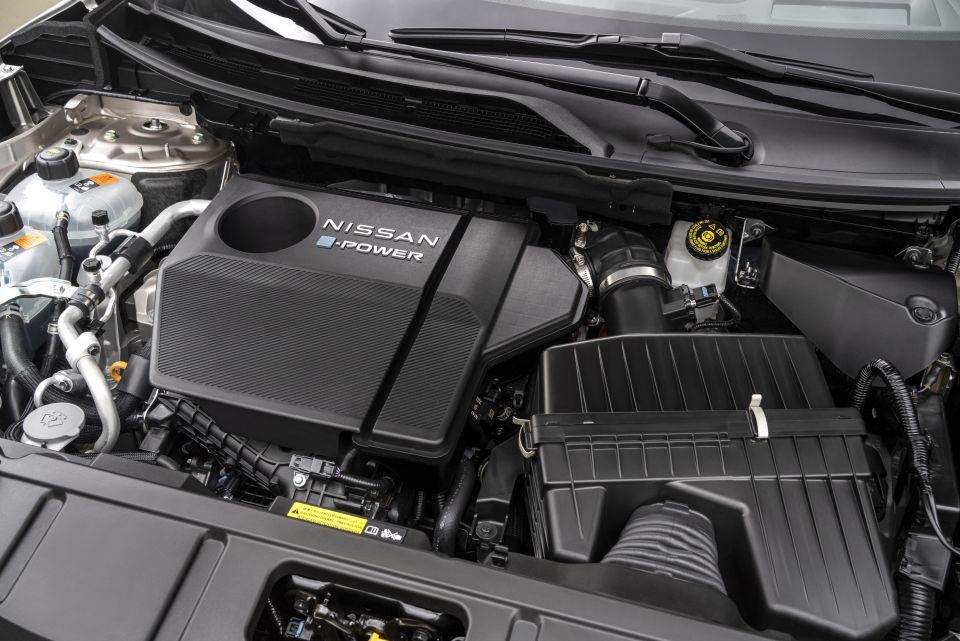
The X-Trail e-Power isn’t like a conventional hybrid. Instead, it uses a combination of combustion engine, generator, inverters, a battery and electric motors for propulsion.
The basic flow of energy kicks off with a 1.5-litre three-cylinder turbocharged petrol engine that produces 106kW of power on 91 RON, and 116kW of power on 95 or 98 RON, along with 250Nm of torque.
This engine comes from the Infiniti family and features variable compression and a rev cap of just under 5000rpm for noise suppression. It’s directly mated to a generator that supplies energy to a set of inverters. These inverters can then feed a 1.8kWh (usable) battery and/or two electric motors (one on each axle).
The electric motors produce 150kW and 100kW of power respectively (front/rear) along with 330Nm and 195Nm of torque. The whole system provides combined outputs of 157kW and 525Nm (peak torque is available from 0rpm).
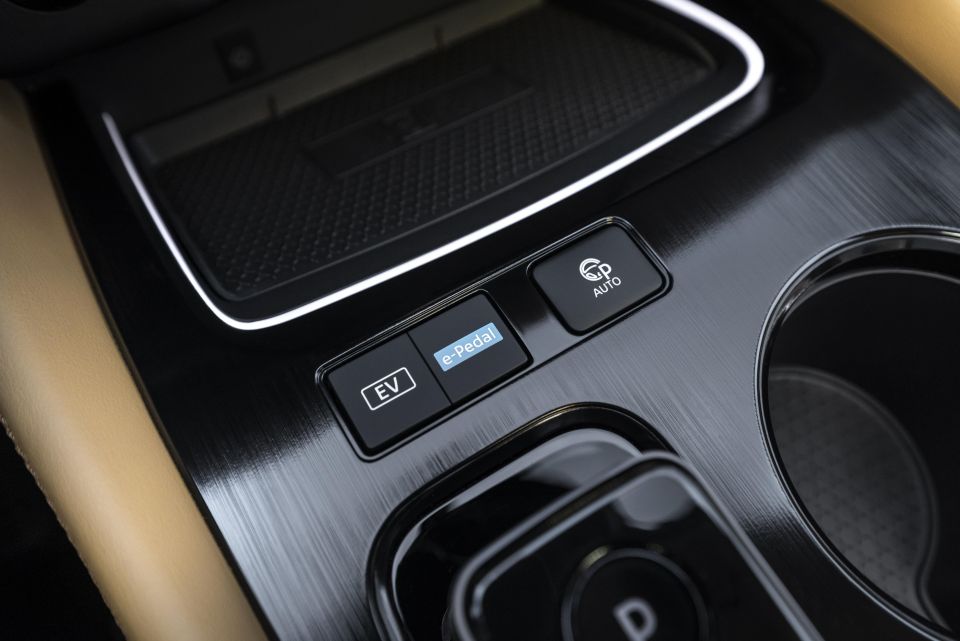
The system then has the ability to drive the car directly from the 1.8kWh battery for a set period or in combination with the internal combustion engine depending on torque load. Importantly though, the internal combustion engine never directly drives the front or rear wheels through a transmission or direct mechanical connection.
That leads to a claimed combined fuel economy of 6.1 litres of fuel per 100km. Our drive was over a set of mountains so it wasn’t representative of a proper combined cycle – as a result we were seeing figures of around 7.5-8.5L/100km.
You might be wondering how it could possibly be more efficient to route energy through an internal combustion engine, a generator, a set of inverters, a battery and then two electric motors. Well, it isn’t.
According to Dan Connely, Nissan’s senior engineer for NTCE, the e-Power system is around 2 per cent less efficient than the mild-hybrid version of the X-Trail (which we won’t get in Australia) when driven on a flat surface.
But, the e-Power system makes up its efficiency gains during regeneration where the mechanical brakes would lose energy as heat during the deceleration process. The e-Power can recoup that energy for later use.
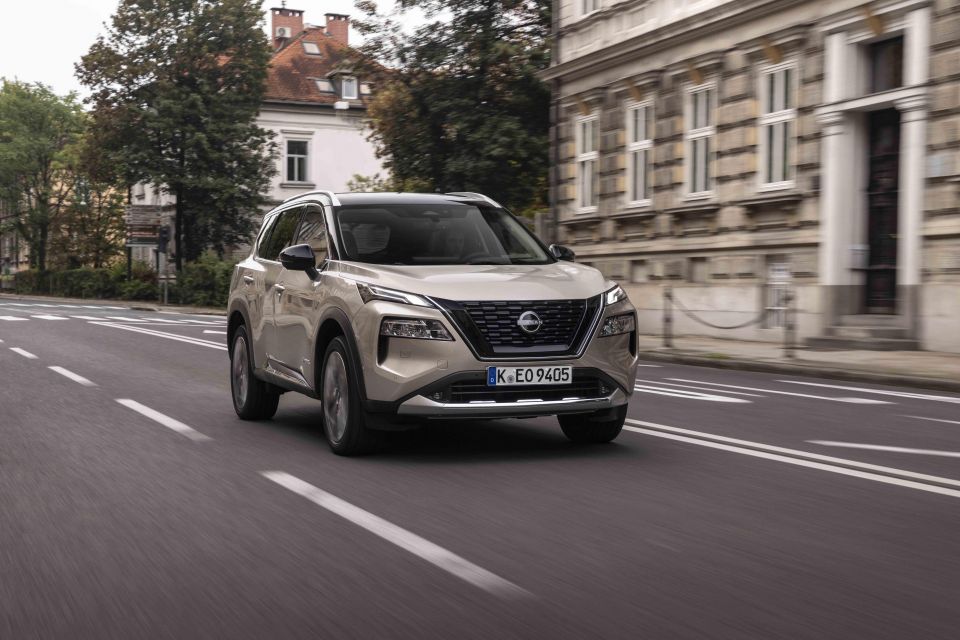
Having driven a number of hybrid vehicles previously, they all kind of feel and sound the same way. They’re quiet until you need to step on the throttle and then there is a symphony of noise inside the cabin as a CVT flares up to supplement the hybrid system’s torque.
The system within the X-Trail feels more like an EV in its operation. Torque delivery is smooth and progressive and the only time you really notice the internal combustion engine is when the battery is depleted and you get on the throttle.
Outside of that it remains fairly quiet inside the cabin. You can also operate the X-Trail e-Power in EV mode up to 90km/h or until heavier throttle applications occur.
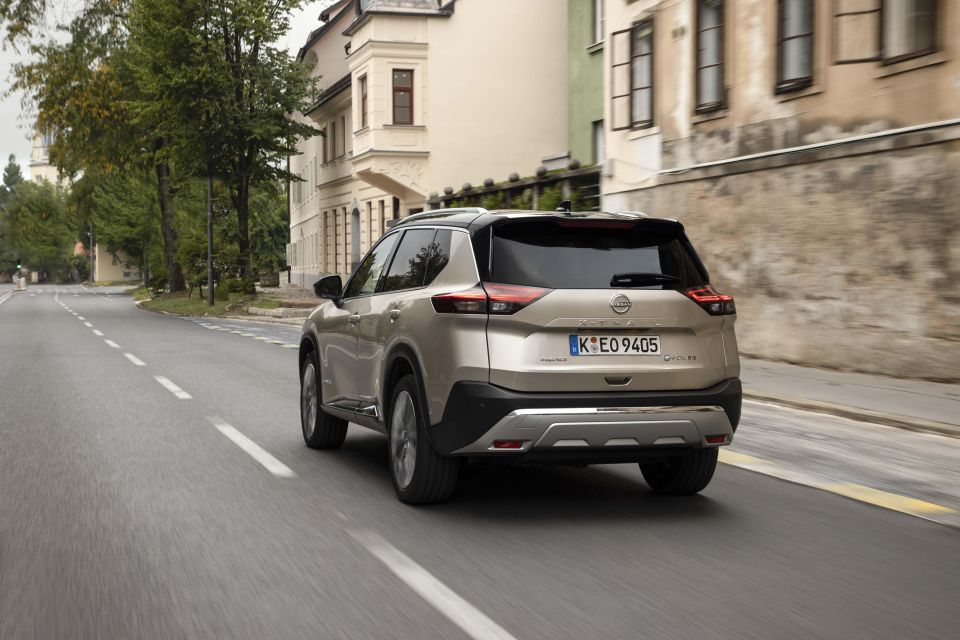
To the average person driving the X-Trail, it feels fairly normal and doesn’t feel out of the ordinary.
There are inconsistencies between applying the throttle and hearing the petrol engine – as sometimes the vehicle will take energy from the battery instead of firing up the petrol engine initially. It takes a bit of getting used to, but outside of that it’s pretty straightforward.
The Ti-L will come standard with 20-inch alloy wheels, and we were pretty surprised with how good the ride was. It’s worth keeping in mind the roads we drove on in Slovenia were well maintained and not really representative of what we have in Australia.
Likewise road and wind noise – even at 130km/h highway speeds – was subdued and incredibly quiet for a vehicle this size, to the point where it feels more refined than the Mitsubishi Outlander the X-Trail shares a platform with.
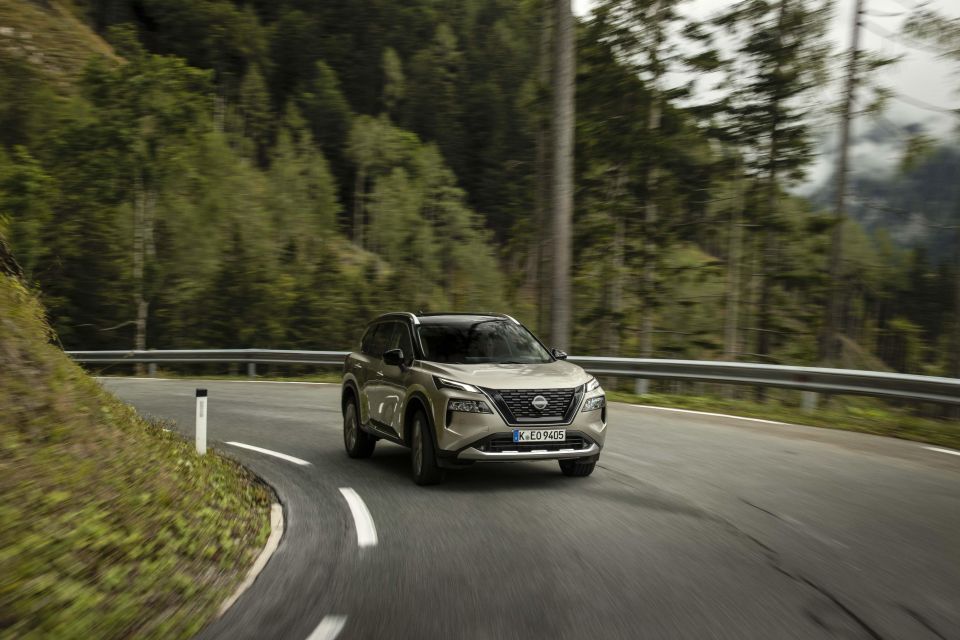
There was a good link between regeneration and the mechanical brakes with two additional regen modes the driver is able to choose from.
Switching the gear shifter to B mode allows up to .15g of regenerative deceleration when the throttle is released, while hitting the e-Pedal button allows up to .2g of regenerative deceleration along with the further application of mechanical brakes to bring the car to around 10-20km/h before deceleration stops.
It’s a little disappointing the e-Pedal didn’t bring the car to a full stop without the driver needing to intervene. According to Nissan, customer feedback suggested it was too difficult to use (like in the Leaf where it comes to a full stop) and as a result they preferred to just use the brakes at lower speeds.
Another clever feature Nissan integrated into the X-Trail e-Power was technology that routed regen through the generator and internal combustion engine when the battery is full.
Typically a hybrid will stop the deceleration that occurs thanks to regeneration when the battery system is full. This typically occurs on a long downhill stretch. When this point is reached often a hybrid won’t slow down at all like it would when the battery had less charge.
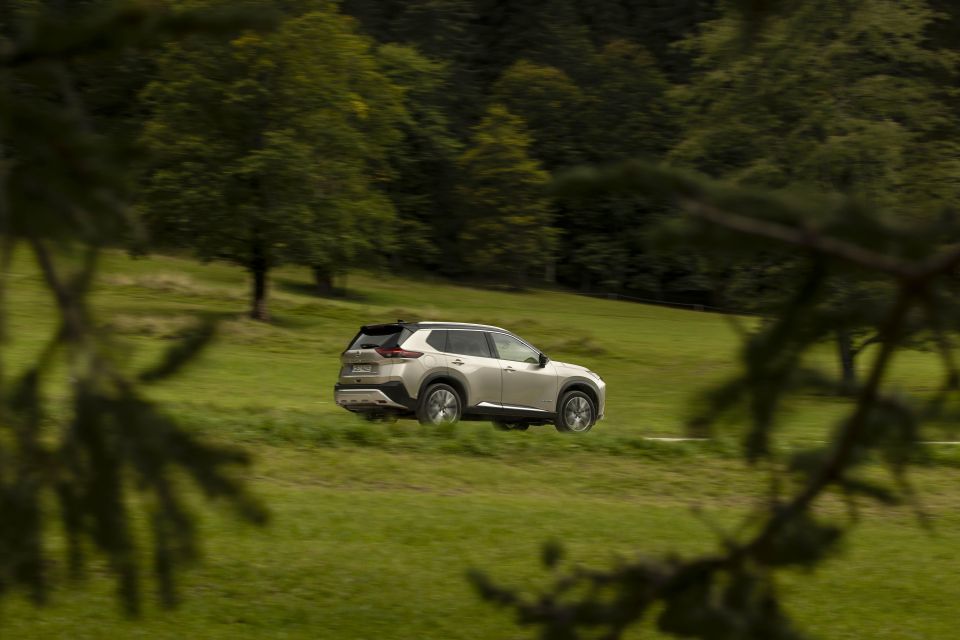
Here in the X-Trail e-Power, it turns to the internal combustion engine for relief in these situations. The inverters and generator via the electric motors run the generator and petrol engine to further slow the vehicle when no more energy can be captured.
It’s not actually using any fuel when it does this, but it creates an outlet to send the energy the car would otherwise lose as heat in the mechanical brakes. It also allows regen to occur through both motors instead of just the one, which provides a more progressive slow down with less pitch.
In terms of dynamics, Nissan has dialled in a reasonable amount of steering feel, and when you switch from the regular driving mode to Sport it offers sharper throttle response and an engaging drive by virtue of instant torque availability on both axles.
The body sits nice and flat through corners and despite its weight – just over 1900kg – and it actually feels fun to drive if you find a nice mountain pass like we did. Torque vectoring is initiated using the brakes and it allows the car to tuck in through corners when the throttle is applied and more traction is needed on either side of the axle.
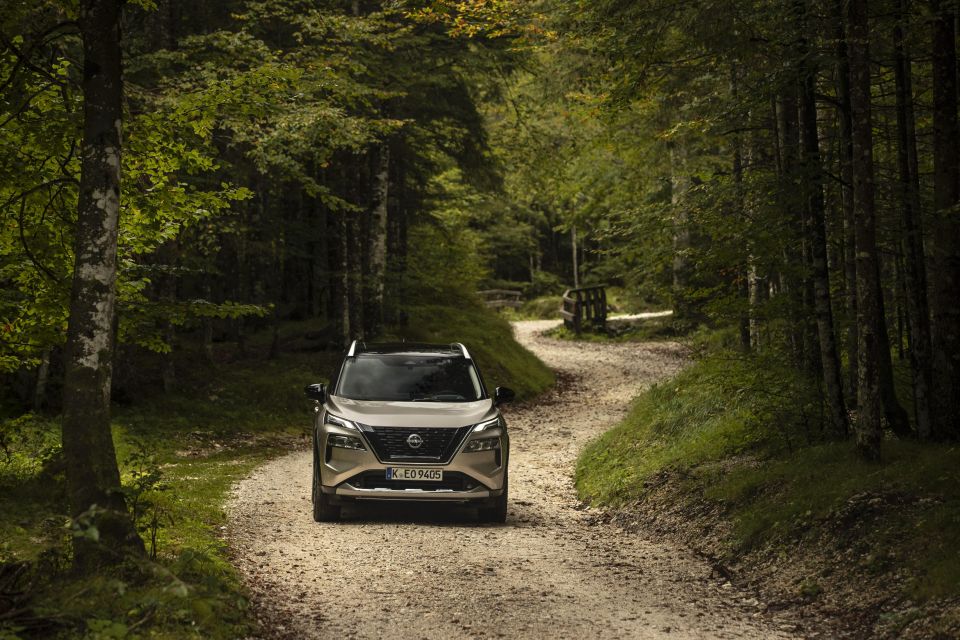
Eco mode allows the vehicle to coast without regen when the throttle is released, while the off-road mode offers a closer 50:50 torque split between the front and rear axles, along with a softer throttle pedal for light off-road driving.
Nissan set up a light off-road course for us to try and the X-Trail actually performed pretty nicely. We did a set of offset moguls, a hill descent, along with a climb where the left of the car was on slippery logs, while the right side had contact with gravel.
It passed these tests fairly easily, and we’re actually keen to give our off-road course another crack in X-Trail when it lands in Australia. It’s worth noting that ground clearance is reduced from 205mm in internal combustion versions of the X-Trail to 187mm due to a battery protection device beneath the vehicle.
On the 0-100km/h sprint, Nissan claims a time of 7.0 seconds, which is pretty impressive for a vehicle this size.
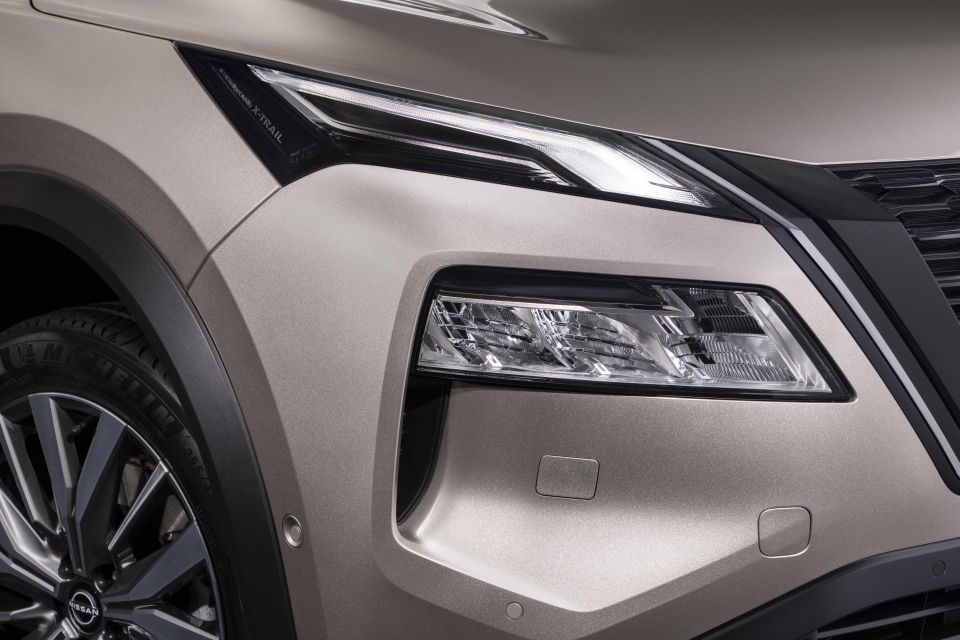
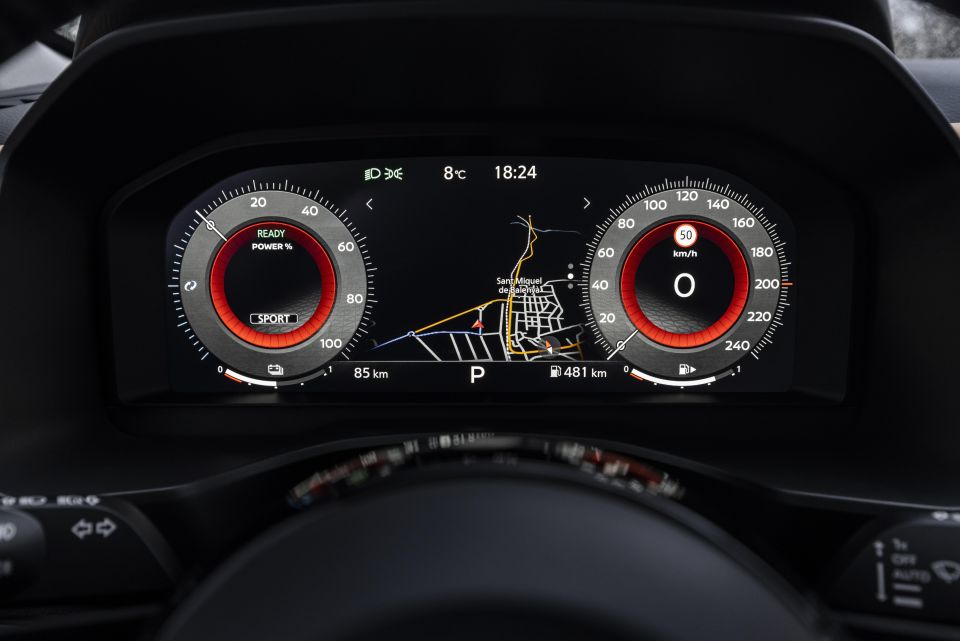


X-Trail Ti e-Power with e-4orce highlights:
X-Trail Ti-L e-Power with e-4orce adds:
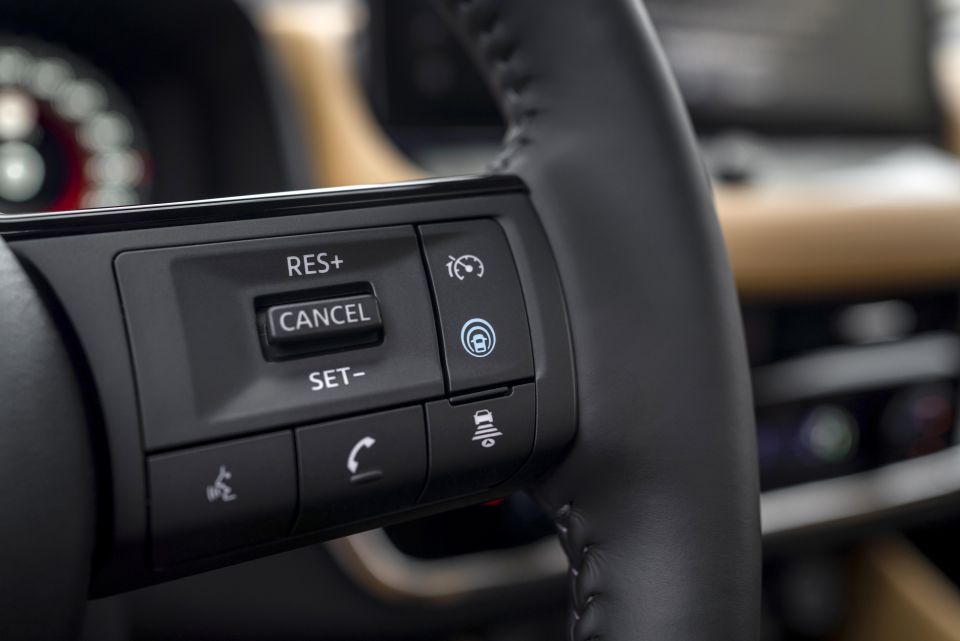
Where expert car reviews meet expert car buying – CarExpert gives you trusted advice, personalised service and real savings on your next new car.
The Nissan X-Trail range is yet to be tested by ANCAP or by Euro NCAP.
Our understanding is that it’s in the process of being crash tested and results will be published soon.
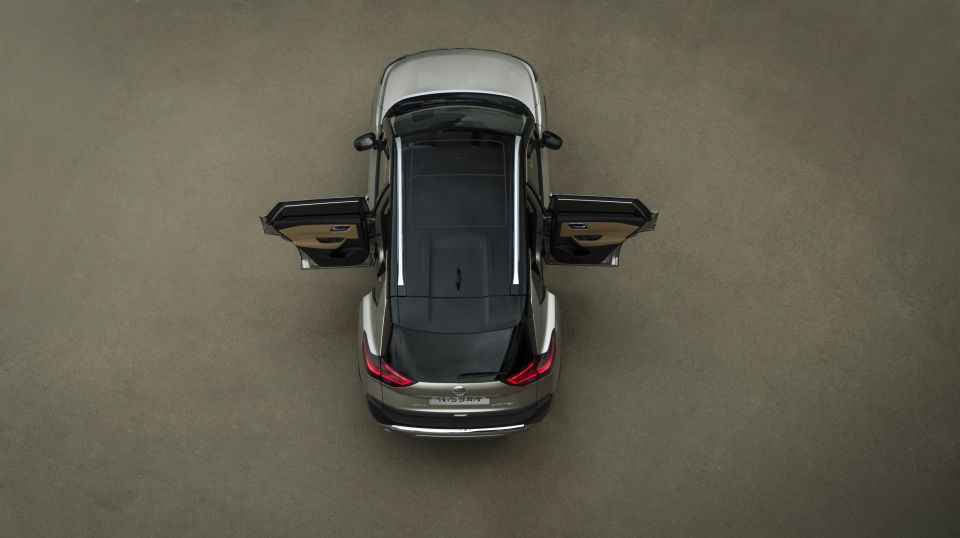
The X-Trail e-Power, like other models in the local Nissan line-up, will be covered by a five-year, unlimited-kilometre warranty.
Servicing costs are yet to be announced for the e-Power version of X-Trail, but we understand it will require servicing every 12 months or 10,000 kilometres – whichever occurs first.
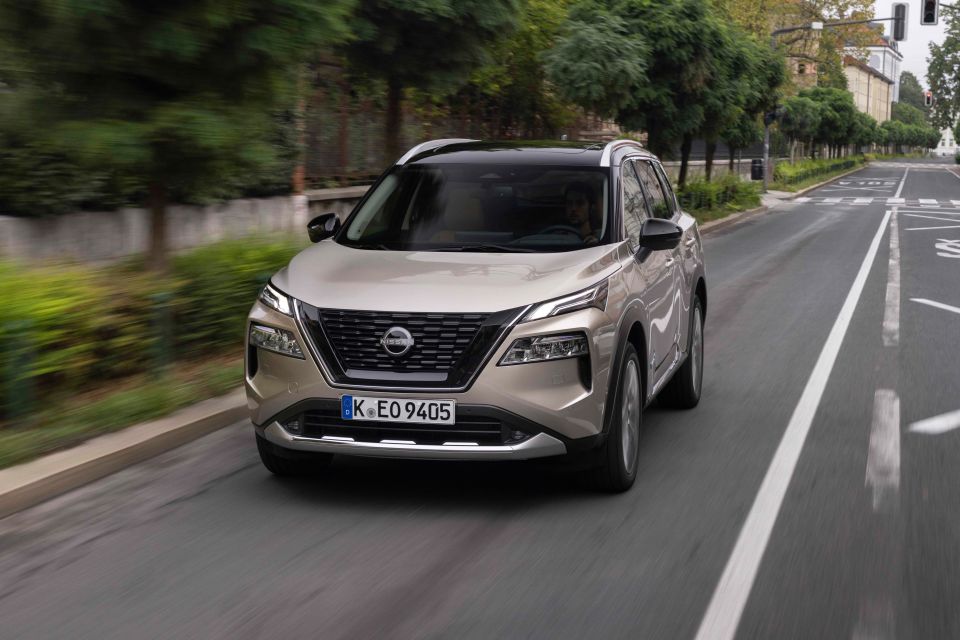
Nissan’s take on the hybrid drivetrain is unique and interesting.
In theory it looks and sounds good, and it translates in practice too. It’s smooth, fairly efficient and quiet on the road, and unlike the Toyota RAV4 Hybrid, the transitions between combustion power and hybrid are smooth and seamless.
We’re not convinced on the price though – while the offering looks and feels premium, it’s as expensive as some PHEV options and ultimately a PHEV provides greater flexibility than even an advanced hybrid system like the X-Trail’s.
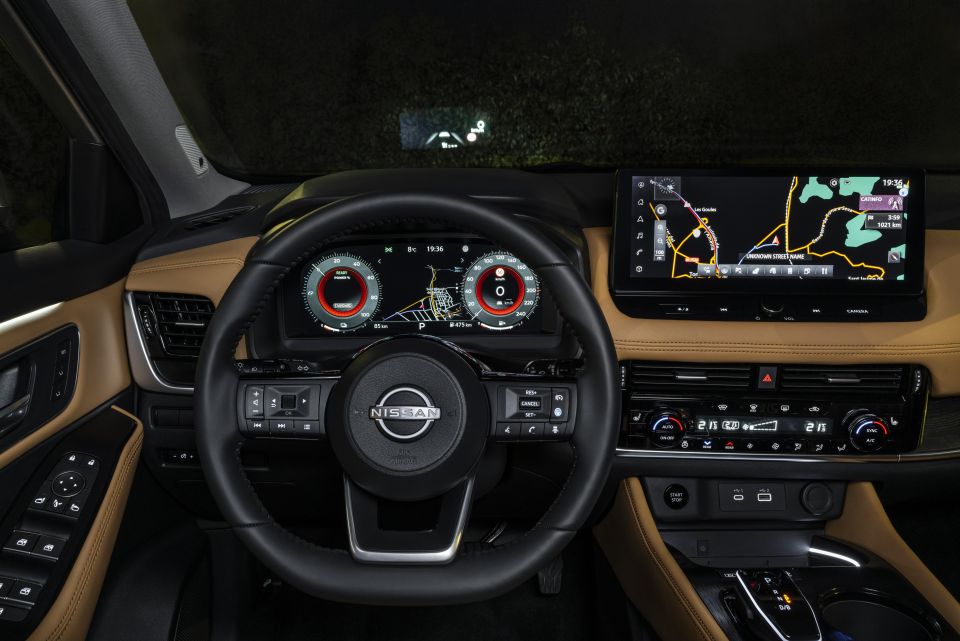
One of Nissan’s boasts of the X-Trail e-Power is that it’s the only seven-seat medium hybrid SUV in the segment, but given we’ll only get the five seat version in Australia, it needs to rely solely on its advanced hybrid drivetrain to cover the price gap.
We look forward to having a proper drive of the Nissan X-Trail e-Power e-4orce when it arrives in Australia early next year.
The real test will be how it performs over our regular test cycles and Australia’s somewhat challenging road conditions. This early test was impressive and we really liked what we felt behind the wheel.
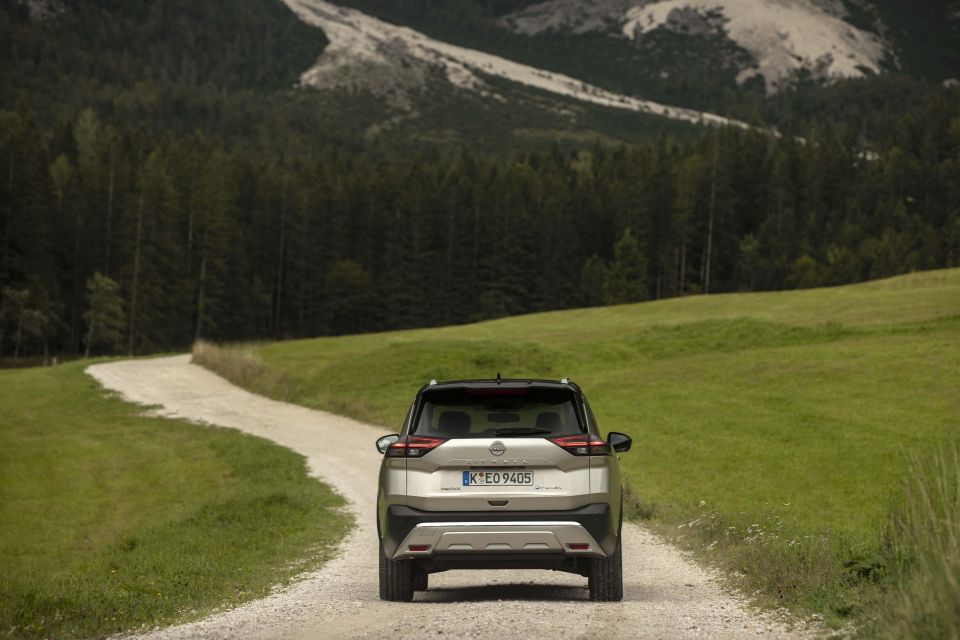
Click the images for the full gallery
Where expert car reviews meet expert car buying – CarExpert gives you trusted advice, personalised service and real savings on your next new car.
Paul Maric is an Australian car expert based in Melbourne, Australia. Paul is a founder of CarExpert.com.au & formerly part of the CarAdvice founding team.


Max Davies
1 Month Ago
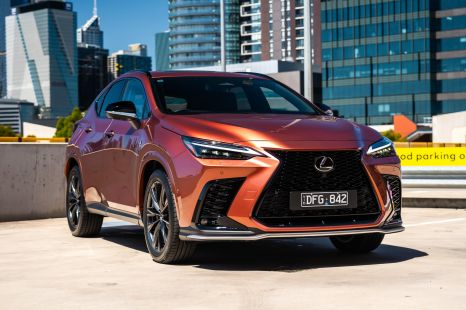

Max Davies
18 Days Ago
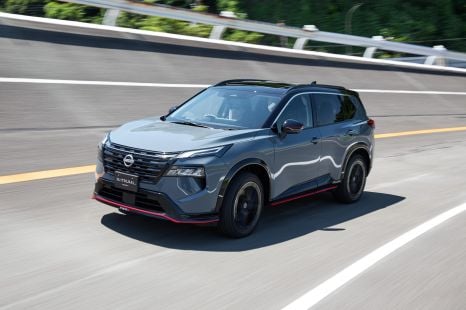

William Stopford
6 Days Ago
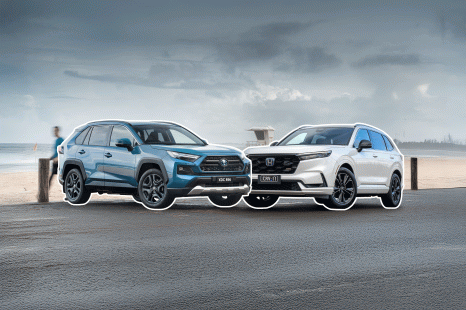

Andrew Maclean
6 Days Ago
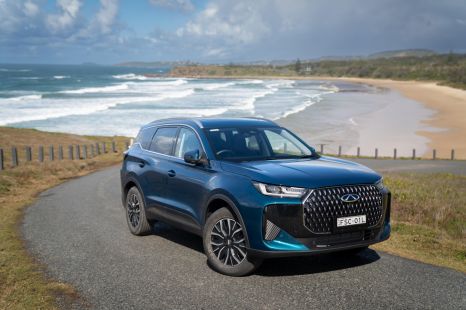

Andrew Maclean
4 Days Ago
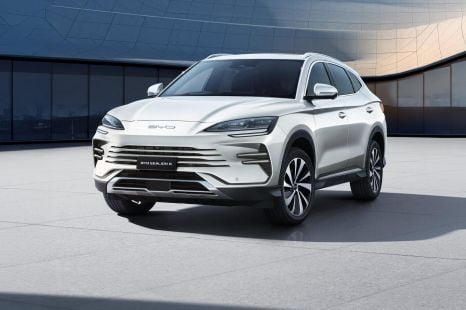

William Stopford
4 Days Ago